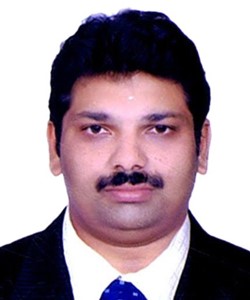


Dr Vivek V. Nair
Editor, JPID
Digital occlusion technologies in Prosthodontics
The diagnosis and execution of a prosthodontic treatment plan, whether by conventional or digital methods, rely primarily on dental occlusion, which is defined as the static relationship between the incising or
masticating surfaces of the maxillary or mandibular
teeth or tooth analogues. Since the beginning of the
nineteenth century, the patient’s mandibular motion
has been observed and analysed. These recordings
are intended to be used for the design and fabrication of interim and definitive prostheses, as well as
to incorporate the patient’s mandibular motion into
diagnostic and treatment planning procedures. Additional tools like photometric sensors, artificial intelligence (AI) algorithms, and ultrasonic systems have
been mentioned as a part of the dental field’s arsenal
for tracking and recording mandibular motion. Furthermore, a few of these systems allow the recorded
mandibular motion to be integrated into the computer-aided design (CAD) software used to create dental
prosthesis.1,2
Intra oral Scanning systems enable recording of the
maxillomandibular relationship through the integration of virtual occlusal records to align previously acquired diagnostic casts. Moreover, iOS systems have
the ability to offer information regarding contacts in
both static and dynamic occlusion. IOS scanning accuracy can be influenced by factors related to the operator and the patient. The accuracy of IOSs depends
on the operator’s skills and decision-making, including the technology and system used, scanning head
size, calibration, distance and angulation, exposure
to temperature changes, humidity, lighting conditions, operator experience, scanning pattern, scan
extension, and use of cutting off, rescanning, and
overlapping procedures. The intraoral conditions of
the patient being scanned that interfere with the IOSs’
scanning accuracy have been referred to as patient
factors. Patient factors include tooth type, interdental
spaces, arch width, palate characteristics, wetness,
existing restorations, surface characteristics, edentulous areas, inter implant distance, implant position,
angulation, depth, and implant scan body design.
Regardless of scanning technology or system, IOSs
offer a viable digital impression option for obtaining
virtual diagnostic casts with comparable accuracy to
traditional procedures. Clinical investigations have
revealed that IOSs' are accurate for capturing complete-arch intraoral digital scans, with trueness values ranging from 73 to 433 µm and precision values
ranging from 80 to 199 µm.2,3,4,5
Digital jaw tracking technologies include ultrasonic,
infrared optical camera, photometric, and algorithms. Jaw trackers are classified based on their functional
capabilities: diagnostic (data collecting and analysis) or diagnostic and design. Diagnostic jaw tracking systems can record and track a patient’s mandibular movements. The software program of the device
can perform a posterior analysis, but the recording
cannot be exported. Diagnostic jaw tracking systems,
or CAD integrable systems, enable the exportation of
the patient’s mandibular movements for integration
into CAD software applications.2,6
Jaw tracking device accuracy varied from 50 to 330
µm among digital systems, with low interoperator
reliability while tracking motion from photographs.
Confounding variables that influenced jaw movement trajectories included mandibular and condylar
growth, kinematic dysfunction of the neuromuscular
system, shortened dental arches, previous orthodontic treatment, variations in habitual head posture,
temporomandibular joint disorders, fricative phonetics, parafunctional habits, and unbalanced occlusal
contact. However, age, gender, and diet did not have
a significant impact.
Conventional occlusal contact indicators’ sensitivity and reliability are affected by material thickness,
strength, and elasticity, along with saliva absorption
and clinician interpretation. While computerised occlusal analysis systems are reliable for measuring
occlusal contact at maximum bite force, traditional occlusal registration methods appear to be more
trustworthy and valid.10
Digital occlusion technology such as IOSs, jaw tracking systems, and computerised occlusal analysis
devices offer effective diagnostic and design tools
for prosthodontic care. Further analysis is needed to
determine the accuracy of digital technologies employed to gather and analyse static and dynamic occlusions. Although digital technologies can enhance
clinical efficiency and diagnostic capabilities, dental
professionals nevertheless face ambiguity.
References: